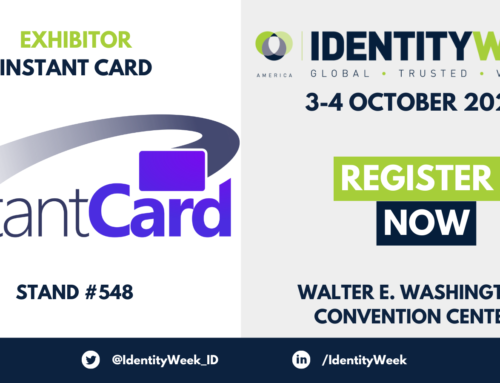A proximity card (also known as a proximity badge or prox card) is a cost-effective way to control who can enter a building. Although locks and keys also help you keep buildings secure, they are inconvenient, time-consuming, and expensive to change or re-issue when they are inevitably mislaid, forgotten, or lost. Additionally, traditional keys are easy to be copied or replicated, which poses an even greater risk to the security of the building as well as to the people within it.
This is where proximity ID cards can help you. But what exactly is a proximity card, and how does it work? Read on to find out.
What Is a Proximity Card?
A proximity card is a type of radio-frequency identification (RFID) card that includes an antenna and an ID chip embedded within the card. This card interacts with proximity reader technology to grant access or capture information.
In other words, a contactless proximity card is a smart card that has a metallic antenna coil embedded to store the encoded data of the cardholder. It can be read without having to actually insert it into a card reader.
As these cards don’t require a swipe or insertion, you can keep them in a wallet or purse and they can be read by simply holding the wallet or purse near the reader.
Plus, these cards are not affected by snow, ice or rain. This makes them more reliable than magnetic stripe cards and a perfect option for outdoor use.
A proximity pass is made up of plastic PVC and allows the cardholder to gain entry into a building, or a specific area within the confines of a building. It ensures security by allowing restricted access for doors, parking gates, and other areas monitored by the card.
How Proximity Cards Work
A prox card contains a pre-defined number that’s identified by a proximity card reader programmed to ‘read’ it. This number is then transmitted to a computer system that decides whether or not to grant access to the building. It all depends on the pre-defined security or access level.
If the card’s details are programmed into the access control list within the computer, it allows the system to unlock the access point so that the user may enter.
The details are kept in the system so that if you wish to create reports or audits, you can easily do so in an automated manner. Such reports also allow you to see who entered the access point and what time specifically they did so.
About Proximity Card Reader Technology
The prox card reader is connected to an access control system panel via wires that carry power to the reader and data from the reader to the panel. The card reader emanates an elliptical-shaped electromagnetic field called the ‘Excite Field’. This field extends behind the reader nearly as much as in front.
When you bring a proximity card within the field, it captivates some of the energy from the field and converts it into electricity. This electricity powers the electronic circuits in the card, transmitting its number to the reader.
Then, the reader sends the card number to the access control system panel, which then searches its database to see if the card number is valid and if it has rights to unlock that door at that time. If the card is approved, the control panel sends a signal to the door lock to open for a specific duration.
How to Program Proximity Cards
A prox card is programmed by a process called encoding. Each card has three pieces of data stored on them that they send to the reader:
- The card format
- The facility code, which is a number between 0 and 255
- The card sequence, which is an ID number for each card and is usually between 0 and 65,435
To be authorized in your system, each card needs to have the correct format, the correct facility code (some systems may use more than one facility code), and a unique ID number in the sequence.
There are many software applications out there that don’t require you to be deeply familiar with the programming infrastructure itself. Instead, all you have to do is ‘assign’ a specific card number to each user. That’s it. However, the problem may arise when you need to order more prox cards in future.
For this, you’ll need to know the brand, format (26-bit prox card or 37-bit prox card, for example), RFID Frequency (125 kHz cards or 13.56 MHz cards), type (clamshell, key fob, tag, or standard ISO card), and card sequence. Not sure about the card configuration? You can send an existing prox card to InstantCard, and we’ll help identify the configuration and provide compatible cards.
Whether you need a compatible proximity card for your existing security systems or want to print onto your existing corporate card, we’ve got you covered. Our ID badge printing process does not damage the chip or antenna within the prox cards. Call us today at 888-980-6179 to learn more about our services.



